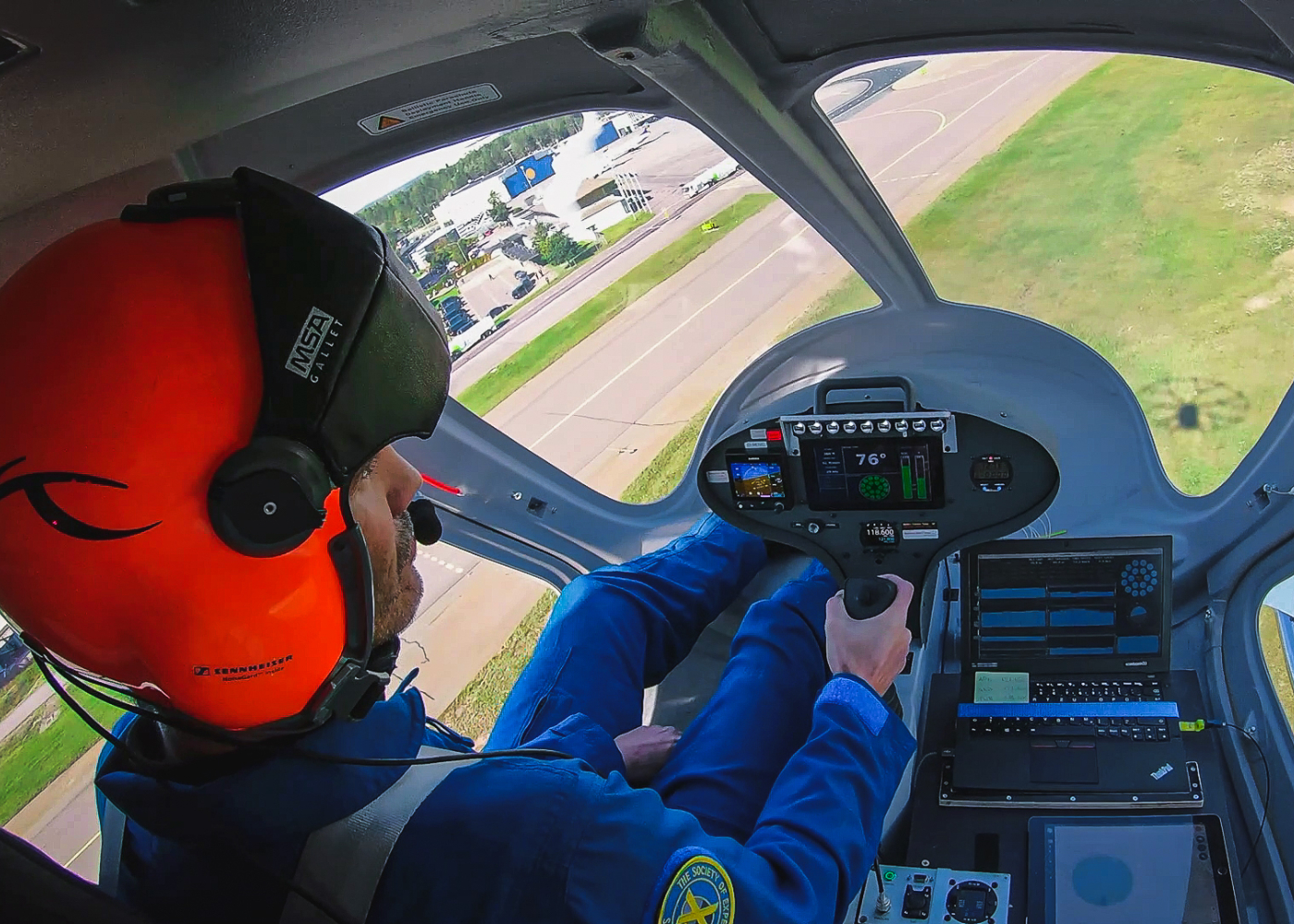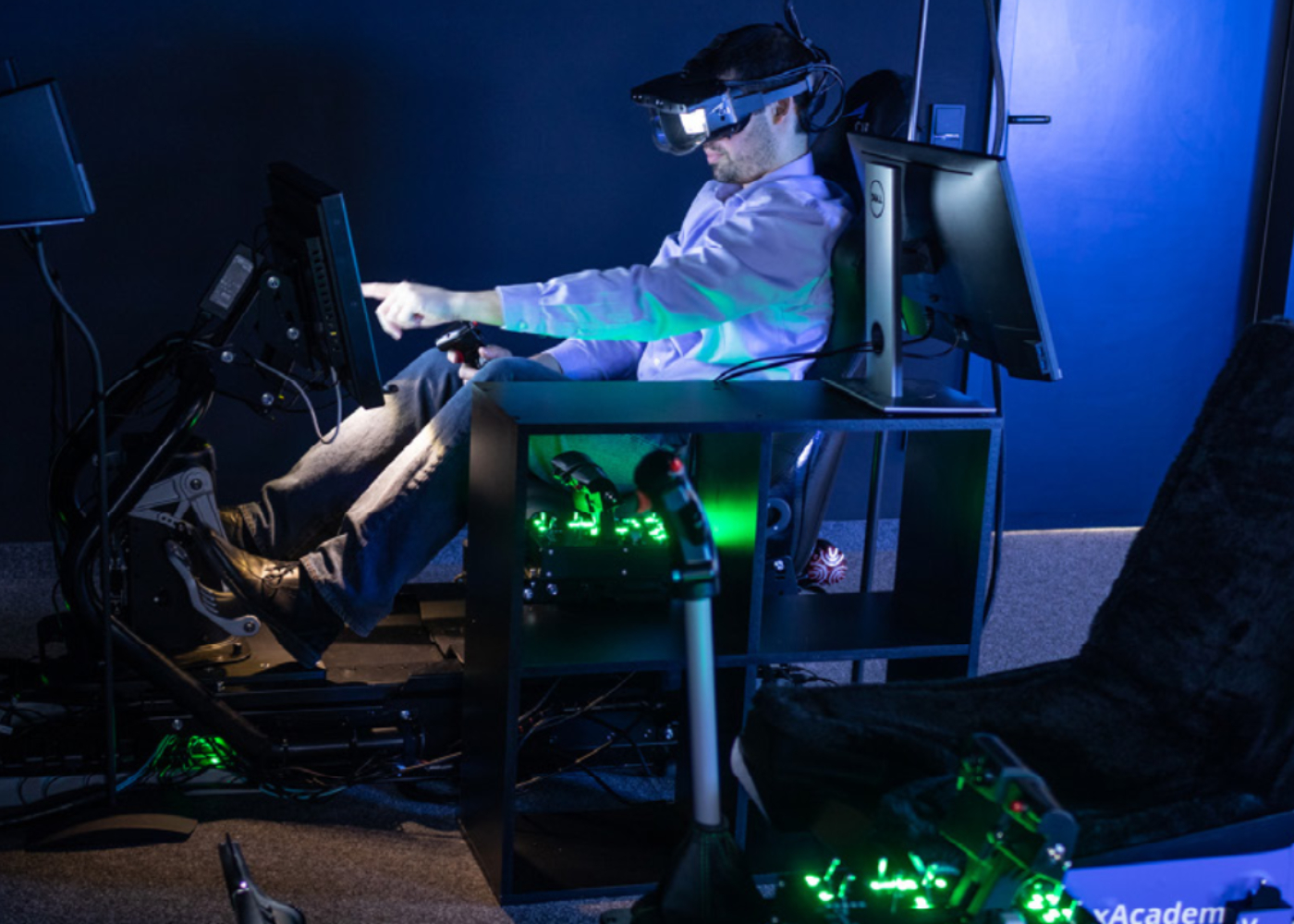When eVTOL.com published a recent story about pilot certification and training, we were asked to take a look at the use of simulators, a type of training mentioned in the story but not explored.

There are concerns that some simulators are being used inappropriately to develop eVTOL pilot training schemes — but it’s clear that with a critical shortage of pilots expected in the years to come, simulators have an absolutely essential role to play. As those at VertX Aero of Ireland has stated, “all the latest digital flight training aids should be incorporated into the official training footprint” in order to train enough eVTOL pilots in a timely manner. VertX was formed by three firms to establish Europe’s first approved eVTOL pilot training organization.
At the same time, however, Michael DeKort, founder of Pittsburg-based consulting firm Dactle, is quite concerned about how some are planning to use simulators in eVTOL pilot training. DeKort advises businesses on development and verification of autonomous vehicles and drones through the use of simulation technology and sensor modeling.
DeKort first pointed to the U.S. Federal Aviation Administration (FAA) Part 60, a document that describes what types of simulation models are appropriate for what purposes.
“For pilot training, the significant departure point is between Levels 5 and 6,” he said. “Level 5 allows for generic cockpit familiarization and flight training. Level 6 is for specific aircraft.” He added that “the jump to L6 is massive.” (Note that numbered certification levels refer to simulators without motion, and lettered ones refer to those with motion. Higher numbers and letters further in the alphabet are more advanced.)
DeKort is concerned that X-Plane and similar systems are being used in the eVTOL sector for Level 6 applications. He said the architectures and modeling approaches of these systems don’t have proper real-time capabilities nor fidelity, especially relative to flight models.
“While X-Plane is fantastic for what it does — which includes FAA Level 5 simulation that is not aircraft-specific and no motion or visual system is required — and can be used for general aircraft development and pilot (human or machine) training and certification, it cannot and should not be used for any critical aircraft- or pilot-specific and critical development, training, or certification,” he said. “If it does, it will provide misleading, incorrect, and dangerous results, especially where the models are pushed, in crash or edge case scenarios and through cascading or simultaneous faults.”
For their part, experts at the Vertical Flight Society (VFS), a non-profit international technical group supporting the advancement of vertical flight, stressed that the actual software used has no bearing on the level of certification received for an aviation training device/flight training device (FTD), or full flight simulator (FFS). Rather, certification levels boil down to four aspects: visual system, motion cues, aerodynamics and flight controls.
VFS experts noted, for example, that an aerodynamic model in X-Plane used in an FTD could result in the FTD qualifying for L6 or above. They point to VRM’s FTD, which uses Aerofly FS2 as their simulation engine and could conceivably be considered a “Level C” FFS if the visual system is found to be equivalent to a dome system.
Similarly, a simulator could be close to a Level 6 or Level 7 FTD using X-Plane with a specific cockpit and a high-level visual system. “Several of our members,” stated the VFS experts, “are working on developing high-fidelity models which may run in X-Plane or other simulation software and could conceivably be qualified up to a Level D simulator.”
Big picture view
Mike Hirschberg, VFS’ executive director, noted that low-cost home flight simulators such as Microsoft Flight Simulator and X-Plane, serve as an excellent entry point to give prospective pilots insights and familiarity with flying an aircraft. “As a community,” he said, “whatever steps we can take to encourage more people to become interested and pursue careers in aviation is ultimately a good thing.”
He explained also that these platforms are becoming more and more realistic due to advances in computing technology, virtual/augmented reality displays and so on, and they’re also used extensively by certificated pilots as part-task trainers or to brush up on skills.
“They offer an intriguing option for building familiarization with new aircraft systems and procedures, particularly for new types of aircraft that may not be readily available for actual flight tests, such as new eVTOL designs,” Hirschberg said. “VFS supports the use of these devices while recognizing the challenges that the vertical flight community faces in adapting existing standards for flight training and simulator device qualification for new type designs such as eVTOL, and new simulation technologies such as virtual and augmented reality.”

Standard development
Simulator standards are currently being developed by those who serve on the G-35 Committee at SAE International, a well-known engineering education and advancement organization. The committee includes representatives from the FAA, many original equipment manufacturers (OEMs) and other industry experts.
However, in DeKort’s view, “SAE is way too slow and most eVTOL makers ignore it. And I can’t get SAE to release a high-level statement explaining the issues and what G-35 is trying to do.”
Hirshberg noted that VFS, having recognized several years ago the need for more pilot training for eVTOLs, has been exploring the idea of creating an eVTOL pilot training task force to complement the efforts of SAE G-35 and others.
“It would provide a mechanism for the eVTOL industry and worldwide regulatory authorities,” he said, “to gain informal feedback on various approaches proposed to train the thousands of eVTOL pilots forecast in the coming years.”
Trainer perspective
VertX Aero is in discussions with multiple OEMs to aid in the testing of prospective eVTOL training aids and will only be using simulators and VR/AR/XR technology in its eVTOL training that are approved by respective aviation regulators.
“Once certified,” said Julie Garland, VertX co-founder, “this technology will offer equivalent level of training fidelity for a fraction of the price of benchmark Level D full motion simulators prevalent in today’s commercial aviation training environment. The industry has still quite a road to travel before certified commercial operations, and we at VertX believe 2025 is the most optimistic of targets. Simulation technology is key to the success of the whole eVTOL industry.”
Garland said that simulators can recreate any scenario required to create a robust training footprint, and “as for training in real eVTOL aircraft, that may form part of the examination process as outlined by the regulator. We will have to adopt a wait-and-see approach. However, with ‘zero flight time training’ being an integral part of the airline pilot training environment, we feel there is little reason not to incorporate this philosophy into the VTOL pilot license footprint from the outset.”
Simulator maker perspective
Joby Aviation has a joint partnership with global aviation simulation provider CAE to develop flight simulation training devices for Joby’s eVTOL aircraft, including FTD Level 7 and FFS.
Stella-Marissa Hughes, leader of CAE’s advanced air mobility strategy for business development and partnerships in the firm’s civil aviation training solutions division, explained that the Joby aircraft has a huge field of view that traditional simulators would not be able to achieve.
“And we need to maintain levels of fidelity that are so important to have a realistic pilot learning experience,” she said. “Qualifying a simulator for pilots involves meeting very high standards, higher than simulation for aircraft airworthiness testing and involves more elements. One quick example is you don’t have to perfectly replicate noise to certify an aircraft, but it is an important cue for pilot training.”
About a year ago, CAE set up a large, dedicated team for eVTOL simulator and training with members that span many company disciplines. In addition to developing simulation products for companies such as Joby Aviation and Volocopter, the team is developing courseware and training programs to train future eVTOL pilots and technicians.
“We will be the end-to-end service provider for AAM, training up the future workforce with new types of simulation products — from simulation for airworthiness testing, to workforce sourcing, to pilot and technician training,” Hughes said. “The technician shortage in aerospace is already very severe.”
Hughes foresees that the first group of eVTOL pilots will be experienced rotary-wing or fixed-wing pilots.
“The bar won’t be lower for eVTOL pilots, but we will need a large number of new pilots so we have to make training more affordable,” she said. “It’s very positive that there have been some amazing developments in the gaming industry and those are coming into the creation of simulators for pilot training. We are investing $1 billion over a five-year period to develop the aviation technologies of the future, including the development of smaller, more cost-effective simulators and other digital technologies that will make pilot training more affordable, efficient and green.”





Can’t wait for that transition!!
interesting topic, forgets to mention that x-plane allows developers to create and test evtol designs with wiggle room to make improvements that later are incorporated into the more sophisticated level 6 and 7 platforms.
Lot of experienced rotary and fixed wing pilots are forced to retire at the age of 65 years due to regulatory requirements despite being in excellent medical shape Class 1. Maybe VTOL industry as a whole needs to petition FAA to increase the VTOL pilots age to 67-68 years as it’s a low-altitude, low stress and highly automated sector where the experience of these veteran pilots would be very useful in the fledgling VTOL field.